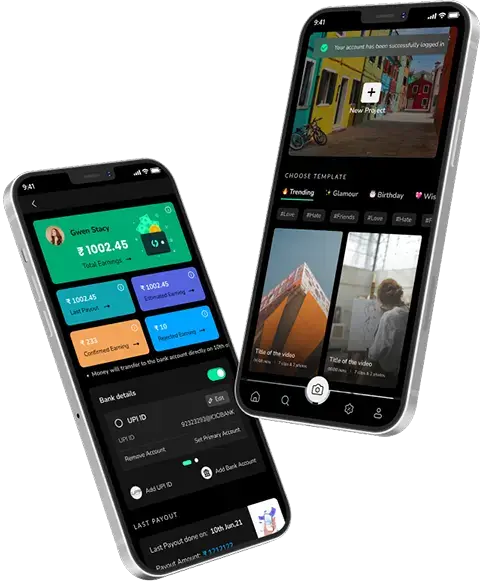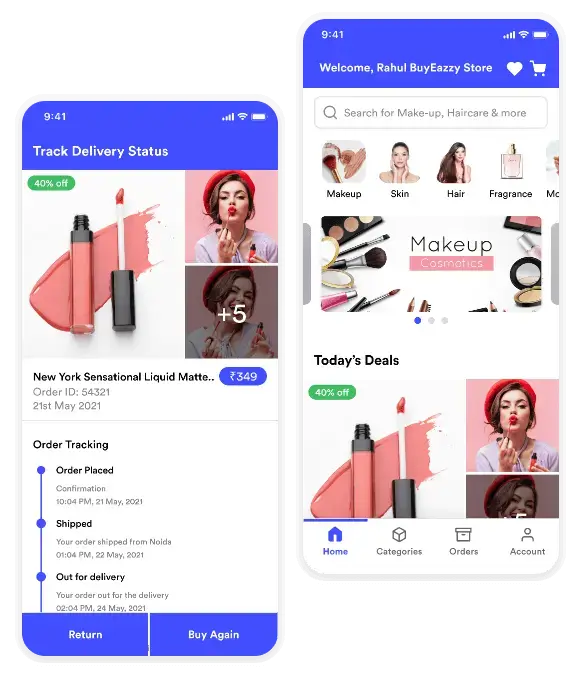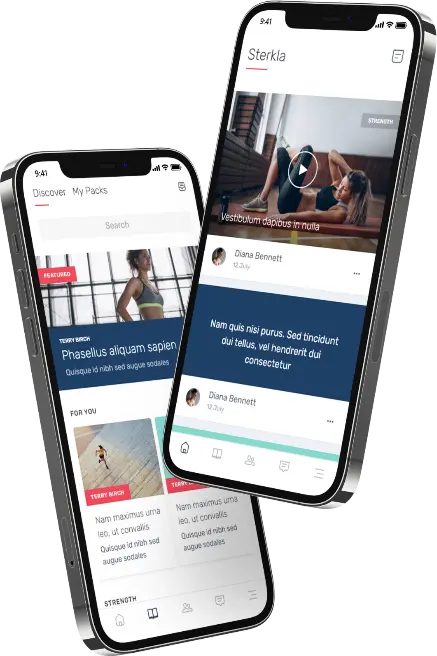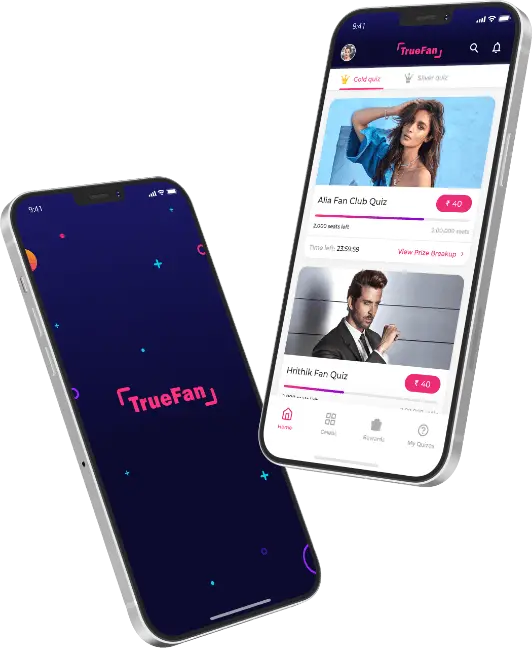Fashion businesses possess the ability to spot trends ahead of time, the power to customize items to suit individual preferences, and the agility to beat the competition. This is not just a product of the imagination but a reality, thanks to Artificial Intelligence (AI) ‘s revolutionary impact on the fashion industry. AI is changing all aspects of the fashion industry from the design stage to delivery, changing how retailers think about and promote, design, and sell their products.
AI opens up new opportunities in this data-driven age, improving efficiency, elevating customer experiences, and advocating sustainability. Through intelligent data analysis, AI allows fashion houses to produce eco-friendly designs by optimizing resource use. Through its advanced data analysis and real-time insight, AI enables anticipation of trends, efficient customer engagement, and revenue increases, laying the foundation for a revolutionary change in the fashion retail world.
This article focuses on the increasing impact of AI within fashion through an e-commerce app development company in UK. We’ll explore its many facets and conclude by examining the upcoming trends and the role of AI in the field of fashion technology.

Why Is AI in Fashion So Important?
Artificial intelligence is an exciting and innovative tool because it pursues accuracy and speed. As data collection and processing become more refined, Artificial Intelligence will resume playing a more significant role in online businesses and retail stores.
More and more experts in the industry predict that no aspect of business or life will be safe from AI and machine learning, particularly in the clothing industry. The most valuable customer information, along with product information and predictive analytics, can be incorporated and improved like never before.
Today’s technology is growing rapidly and altering the entire retail sector, not just fashion retail. Artificial intelligence doesn’t require the highest level of technical knowledge to use. It’s now more accessible thanks to simple, user-friendly, and easy-to-use platforms, making it a desirable and valuable option for retailers to implement.
Also Read : Unleashing the Power of AI: Transforming Software Development with Machine Learning

Advantages of Using AI Fashion Models for Clothing Brands
In recent years, artificial intelligence (AI) has had a powerful impact on many sectors, such as fashion. AI fashion models, or digital entities that can showcase clothing and accessories have been changing how fashion brands showcase their collections.
1. Cost Efficiency
One of the greatest advantages of AI models is the decrease in the costs of shooting photos. Model shoots traditionally involve various costs, including modelling fees, stylist payment, cost of location, and travel costs. The creation of AI fashion models could reduce many of these expenses. They are designed and managed digitally, so no physical or travel arrangements are required. This can result in savings, particularly for companies that frequently update their inventory.
2. Speed and Scalability
AI models may be used quickly and can be easily altered to fit different fashion styles. This is not always the case for human models. If you are a brand that operates using high-end fashion models, efficiency is essential. AI models can put on hundreds of different outfits each day, and modifications to their appearance—like hairstyle or body type—can be accomplished with two clicks. The scalability and flexibility of AI models allow companies to promote their goods more quickly and efficiently.
3. Inclusivity
Inclusion and diversity are becoming major themes in the world of fashion. AI models accurately represent various body types, ethnicities, and ages without the ethical and logistical issues of human models. This technology lets brands show their commitment to representation without any additional cost or complexity.
4. Consistency
AI models are incredibly consistent in their facial expressions and even lighting conditions. These are essential for branding and aesthetic coherence across products. This can be beneficial for e-commerce websites, as consistency in appearance aids potential buyers in making informed purchasing decisions while browsing through different products.
Also Read : The Rise of E-commerce Apps in Saudi Arabia: Opportunities and Challenges
5. Sustainability
AI models help sustainably by reducing the requirement for physical samples and the resulting disposal. Virtual modelling lets designers improve their designs digitally and make adjustments before the first strip of material is cut. This reduces not only the amount of waste but also the carbon footprint that comes with traditional photo shoots.
6. Innovative Marketing
Utilizing AI models, brands can create engaging and innovative marketing campaigns. The digital models are programmed to appear in any background or setting—be it a busy cityscape or an idyllic beach—without the need for complicated setups or environmental effects. This will not only draw the attention of prospective customers but also help position the brand as a progressive designer who is a pioneer in digital fashion.
Also Read : The Transformative Power of AI in the Sports Industry
7. Data-Driven Insights
AI models can give essential insights into customers’ interactions with various outfits. Brands can identify what poses, models, or clothing they are most interested in and adjust their design and marketing strategies to align with this. This method of data-driven analysis can significantly improve your effectiveness in promotional efforts and new product launches.
8. Global Accessibility
In the end, AI models make it easier for brands to reach a wider audience. They can design regionally specific variations of the models that accommodate cultural differences and preferences without any additional cost. This is a huge benefit in an increasingly globalized market that allows brands to broaden their influence and reach out to international buyers.

AI Technologies and Techniques in Fashion
Fashion has utilized numerous AI techniques and methods to alter processes from design to the customer experience. This is a comprehensive description of how AI techniques and technologies can be employed by an e-commerce app development company in UK within the industry of fashion:
1. Machine Learning (ML)
- Image Recognition: ML algorithms can determine patterns and objects in images, making them perfect for detecting clothing styles, colours, and even counterfeit items.
- Natural Language Processing (NLP): NLP allows the analysis of textual data, which helps fashion companies understand feedback from customer reviews and online sentiment. It is used to improve chatbots for product descriptions and virtual assistants.
- Reinforcement learning: This method is used in recommendation systems and virtual stylists. AI learns from user interactions to offer more relevant product suggestions and style tips over time. Reinforcement learning is pushing fresh possibilities for advancement.
2. Computer Vision
- Searching for visuals: The computer lets customers find trendy products by uploading images or taking photos. It examines the visual attributes of items to locate identical items visually, making finding items easier for consumers.
- Virtual try-on: Computer vision is the engine behind augmented reality (AR) and virtual reality (VR) software that allows customers to experience virtual clothing and accessories before purchasing. It analyzes the body’s shape and size to provide realistic simulations.
- Recognition of products: The latest technologies assist in automatizing the process of categorizing and tagging clothing items, making inventory management more efficient and allowing faster product listing for online stores.
- Automatic authentication: An AI algorithm is used to identify counterfeit items, which ensures authenticity in the marketplace. Entrupy, for instance, uses AI and a database with authentic and fake images of items to verify authenticity.
3. Generative AI and Deep Learning
Generative AI, which includes techniques such as Generative Adversarial Networks (GANs), is a key element for fashion designers. GANs, comprised of two neural networks, a creator and discriminator, combine to create unique and distinct fashion styles, designs, and even complete outfits. Beyond GANs, Generative AI additionally includes the ability to transfer styles, allowing designers to experiment with fashion design by applying one product’s design to another.
Deep learning, a different aspect of AI, is crucial in fashion forecasting. It allows fashion firms to analyze huge quantities of data, including social media posts and influencers’ activities, to forecast the latest trends in fashion and early indicators. With neural networks deep learning models, deep learning models can process and understand complicated data, identifying trends and patterns in clothing styles, colours, and elements of design that will become popular shortly. This type of analysis allows fashion firms to make informed choices that can be adapted to changing consumer tastes and trends, ensuring their competitiveness in the constantly evolving fashion industry.
4. Recommendation Systems
1. Collaborative filtering:
These latest technologies utilize customer behaviour and preferences to suggest fashion items based on what other customers have bought or enjoyed. Collaborative filtering may enhance personalization on fashion-related websites.
2. Filtering based on content:
The method will recommend products based on their qualities and characteristics, taking into account factors like colour, design, style, and material.
3. Virtual assistants and chatbots:
Artificially powered chatbots, virtual assistants, and other virtual agents enhance customer service by offering real-time assistance, responding to product queries, and assisting customers with purchases. They also help customers through the buying process by their preferences and requirements. Voice recognition is a new element of virtual assistants, allowing voice commerce to be used.
These breakthrough technologies are changing the landscape of fashion and an advanced e-commerce app development company in UK is embracing this change, From computer vision and machine learning to analytics based on big data and generative AI.
Also Read : Redefining Wellness in the UK with Innovative Apps : FitTech Breakthrough

Challenges Across the Life Cycle of Fashion Design
Fashion companies face a variety of issues at every stage of the process. AI could provide solutions to specific problems. Here’s a list of topics and how an e-commerce app development company in UK can aid via AI:
Also Read : Mobile Apps and the UK Property Market: A New Way to Buy and Rent Homes
1. Research and inspiration:
Challenge: Keeping up with the rapidly changing trends and consumer trends.
Solutions: AI can analyze social media, fashion blogs, and online forums to discover new trends. AI also assists when conducting market research by analyzing consumers’ behaviour and preferences.
2. Concept development:
Challenge: Transforming abstract ideas into tangible design concepts.
Solution: AI-powered software can create design suggestions based on keyword input, allowing designers to discover new possibilities and improve their ideas.
3. Drawing and sketching the initial design:
Challenge: streamlining the design process while tackling the time constraint.
Solutions: AI can help make repetitive design tasks easier and help designers concentrate on the art of creating. It also provides ideas for design elements based on past and current trends.
Also Read : How Artificial Intelligence Technology Could Help Fight Climate Change?
4. Fabric choice:
Challenge: Identifying the best fabrics compatible with the design concept and budgetary limitations.
Solution: AI algorithms can analyze historical data about fabric performance, costs, and availability to suggest suitable choices, improving the decision-making process.
5. Pattern Making
Problem: Designing precise patterns that guarantee an ideal fit.
Solution: AI can assist in designing patterns and optimizing them, ensuring accuracy and efficiency. Pattern-creating software powered by AI can adapt to certain body types and speed up the process of pattern creation.
Sample Garment Design (Toile as well as Muslin):
Challenge: Prototyping through iterative processes is time-consuming and expensive.
Solution: AI can simulate fabric behaviour and fit virtually, thus reducing the number of physical prototypes required. Virtual prototyping tools speed up the design iteration process.
1. Adjustments and fittings:
Challenge: Finding the ideal shape for a variety of body types.
Solution: AI can analyze body measurements and create custom patterns for various sizes. Virtual fitting rooms powered by AI can assist customers in visualizing how clothes will appear on them.
Also Read : Artificial Intelligence Technology – Major Components
2. Final pattern and grading
Challenge: Grading patterns of different sizes with precision.
Solution: AI-driven pattern-grading tools can automate the process and ensure accuracy and consistency across a variety of sizes.
3. Sewing and cutting:
Challenge: Optimizing the production process to maximize efficiency while minimizing the amount of material wasted.
Solutions: AI can optimize cut patterns to eliminate waste and improve the efficiency of production lines through predictive maintenance and workflow improvement.
4. Quality Control:
Challenge: Ensuring consistency of quality assurance across a wide range of clothes.
Solution: Computer vision systems powered by AI can automate quality control by detecting imperfections and irregularities in the production line and enhancing quality assurance.
Marketing or fashion show:
Challenge: Creating appealing marketing content and anticipating the response of consumers.
Solution: AI can analyze consumer behaviour, market trends, and social media interactions to guide marketing strategies. It can also assist in the creation of content by generating product descriptions, captions, descriptions, and other visual elements.
1. Production:
Challenge: Balancing the speed of production with quality.
Solutions: AI improves production schedule, resource allocation, and predictive maintenance, increasing production efficiency while minimizing disruptions.
Feedback from consumers and retailers:
Challenge: Understanding and responding to feedback from consumers efficiently.
Solution: AI can analyze customer reviews, Facebook feedback, and sales data to give insight into consumer behaviour. Sentiment analysis can assist companies in assessing the effectiveness of their design and making informed decisions based on data.
AI can aid in designing clothes by providing insights based on data and making repetitive work easier. It can also maximize the use of resources and increase overall effectiveness and decision-making. Incorporating AI throughout different fashion business phases could result in more creative and adaptive processes.

AI Used for Online Fashion Retail
As we’ve previously explained, AI in fashion is a better option than ChatGPT, though the prompt-and-answer feature is an important game changer that fashion companies shouldn’t overlook.
It could be a significant dramatic change in the management of your supply chain system or an upgrade to your customer loyalty plan using automation methods for customer service AI, a great tool to enhance every part of the business. There is no limit to how effective AI technology can be for retailers.
Also Read : 8 Effective Methods and Resources for E-commerce Marketing Automation
Here are some ways to incorporate AI into your business with the expertise of an artificial intelligence App development company.
1. Using AI for Customer Segmentation
Separating your customers into targeted, similar groups is essential to any marketing plan. Using AI or machine-learning models, you can find your ideal target audience and ensure that your customer segments are as current as possible, ensuring that your marketing efforts remain relevant.
The e-commerce retailer of jewellery and clothing located in the Netherlands has gamified its data collection with a decision tree-based learning model. Customers are offered the option to tailor their shopping experience. This has inevitably enhanced customer experience.
During the style test, the items are displayed sequentially, and the user is asked to choose every item shown. The user clicks either the heart or the X button to decide if the item they are shown appeals to them.
Also Read : Mastering eCommerce Success: The Comprehensive Guide to Developing an E-commerce App Like Adidas
AI makes all their decisions, builds customer profiles, and instantly links them with the best products.
It’s a simple idea that transforms the retail experience for customers and allows them to keep learning about their customers’ evolving desires and requirements.
2. Using AI for Product Recommendations
The most frequent AI application for online fashion companies is product recommendation. Keeping abreast of customer desires is crucial for engaging with your audience and influencing their fashion choices.
With an AI-powered suggestion engine, you can combine all your data to give you a genuinely effortless shopping experience.
An engine for product recommendations analyzes and categorizes the products offered by your online store using some rules. The process uses information regarding your product, including the number of sales, views, or even reviews, to display similar products, permitting you to classify items according to popularity, the most frequently viewed and frequently purchased together, and other such categories.
When your engine is connected to your customers’ data, including the top categories that customers visit, such as products, categories, or purchases, it will use AI to determine the most appropriate suggestions for your customers.
An engine for product suggestions sorts and employs artificial intelligence to help sort the products on your store’s online shop.
Offering relevant and personalized suggestions can be extremely beneficial for fashion-related businesses. It also improves the customer experience and encourages user engagement.
3. Using AI for Smarter Site Search
The majority of customers’ interactions with a fashion store online are done through the site’s search bar. Customers trust this method to navigate their way through your website and browse your merchandise, so having an enhanced search capability is a must in the fashion world. This is why intelligent site searches and semantic interpretation are two of the top solutions that AI can provide to fashion shops online.
Utilizing artificial language processing, AI can extract the meaning of the descriptions and titles of your product catalogues and then match them to the phrases and words in your customers’ search queries.
Utilizing the natural processing of language, AI can extract meaning from the descriptions and titles of your catalogues of products and then match them to the terms and phrases in your customers’ search queries. Utilizing the information gained through this process, AI can appropriately evaluate your products by balancing the learned ranking information with the relevance of semantics.
With this kind of AI installed, your search results are extensive, seamless, and more valuable. The results a user receives can be influenced by their needs rather than simply matching keywords to web pages. For example, understanding the difference between a “shirt dress” and a “dress shirt.”
Self-learning AI is among the most crucial options for businesses within the fashion industry to create personalized digital experiences. If done correctly, it will increase conversion rates, average order value, revenue per visit, customer lifetime value, etc.
Also Read : How does an Artificial Intelligence App add Great Potential to your Business?
4. Using AI To Anticipate Customer Purchases
The power to predict the likelihood of a buyer is a significant advantage for retailers. AI can assist you in identifying the customer’s behaviour using predictive analytics and provide practical insights to apply to your business strategy.
Utilizing aggregated data from all your clients, AI can determine if specific customers are indicating they will make a purchase soon. By analyzing their interactions with your brand, such as the times they visit your product pages, the frequency with which newsletter openings are held, etc., Artificial intelligence will determine which customers are to convert. You can alter your marketing strategies accordingly.
5. Using AI for Purchasing Recommendations
One of the main problems that retailers in the fashion industry confront is overstocking. AI can help forecast the demand for the right products to purchase to keep up with the latest trends and in the right quantity.
Brands can use machine learning to estimate demand for a specific product and consider all relevant aspects, including its past sales record, the company’s current inventory, market trends, and promotional offers. More advanced AI models and algorithms could be utilized to anticipate price fluctuations from suppliers and suggest the best times for ordering to reduce the cost of purchasing.
AI-based algorithms could be utilized to optimize supply chain networks and manage inventory.
6. Using AI for Inventory Management
One application that artificial intelligence stores believe has great potential is inventory management. The applications and outcomes that AI provides are seemingly limitless.
Artificial Intelligence algorithms can improve your supply chain network and speed up packaging, stocking, and completing orders. It can predict and analyze future orders, streamline delivery and shipments, and provide insight into the data collected from the supply chain’s data.
In an industry where fashion requires accuracy and precision, AI is an invaluable inventory tool.
7. Using AI To Find Ideal Price Points
AI can help keep your company a step ahead of the competition.
Utilizing freely available data, AI can monitor your competitors’ prices and suggest the best price points for maximizing the revenue you earn.
8. Using AI Chatbots
AI chatbots, also known as intelligent assistants, are a different way artificial intelligence can be used in e-commerce that is fashionable. They can be akin to customer service representatives assisting customers in locating the items they’re looking for.
AI chatbots can replicate customer service representatives and fashion retailers and answer customer questions quickly.
Chatbots offer a superior level of customer service by instantly responding to customer inquiries. When powered by AI chatbots, they will provide customers with the same personalized service that an employee in a store can, such as recommending similar products to those they’re looking for and complimentary items they’ve previously purchased.
Also Read : How AI Chatbot App Development Will Transform The Industry in 2023?
It’s an effective and sustainable way of providing customer service that could help create a lasting relationship with your customers.

Future Trends of AI in Fashion
The application of AI in the fashion industry is anticipated to increase in the coming years. Here are a few of the most important trends that are expected to emerge:
Also Read : Fashion Metaverse: Virtual Clothes in Exchange for Big Bucks!
1. Sustainability:
AI will be used to help fashion companies become more eco-friendly. By optimizing the production chain, reducing waste, and increasing efficiency, fashion firms can reduce their environmental impact and build an environmentally sustainable business.
2. Marketing with Influencers:
AI will be used more frequently in marketing campaigns involving influencers. By analyzing data from Facebook and other social platforms, AI can help fashion businesses find the most influential bloggers and social media celebrities with whom to collaborate.
3. Analysis of Predictive Trends:
AI and machine learning can interpret data gathered from sources such as runways, social media, and street style to accurately predict fashion trends. This trend is predicted to continue, allowing brands to stay ahead of trends and design popular clothes.
Also Read : Key Advantages Of Using Artificial Intelligence In The B2B Space!
4. AI-Generated Fashion Design:
Designers can use AI to generate new ideas by providing them with images of various clothes. AI can blend these styles in different ways to create completely new fashion ideas, resulting in new and exciting fashion trends.
5. AI-powered fashion guideline:
AI-powered chatbots are now providing customers with a customized fashion guide in line with their body shape, style preferences as well as previous purchases. This trend is expected to increase, providing shoppers with a personal stylist on-call 24/7 experience.
It is important to remember that although these trends are the possible future of AI in fashion, acceptance of this technology may differ. Privacy and ethical concerns must also be addressed if AI plays a greater role in the fashion industry. This is where partnering with an e-commerce app development company can be really helpful to smoothly integrate security measures.

Conclusion
The convergence of fashion and technology is bringing an exciting paradigm shift that’s altering the way we view and interact with fashion. AI-generated fashion models allow retailers to tackle the challenges of diversity, accept diversity, and unleash the power of innovation in a new way.
From streamlining the expensive and complex process of creating and adapting swiftly to changes to promoting diversity and sustainability, AI models are carving new paths for business. As retail businesses venture into this new and exciting world, the possibilities for development and innovation are evident. Let the history of AI models be a lasting reminder that, far beyond algorithmic and pixel-based, it is an adventure towards authenticity, inclusion, and a future in which fashion has no limits.
Techugo, an e-commerce app development company in UK with its expertise in e-commerce app development, can integrate AI-generated fashion models into its services. They understand the way we view and interact with fashion, allowing retailers to address diversity, promote innovation, and streamline complex processes. Techugo can help retail businesses pave new paths toward development and innovation by incorporating AI models. Get in touch today to create a future where fashion knows no limits and inclusivity thrives, shaping a new era in the retail industry.
Post Views: 1,526




 SA
SA
 KW
KW
 IE
IE AU
AU UAE
UAE UK
UK USA
USA
 CA
CA DE
DE
 QA
QA ZA
ZA
 BH
BH NL
NL
 MU
MU FR
FR
































